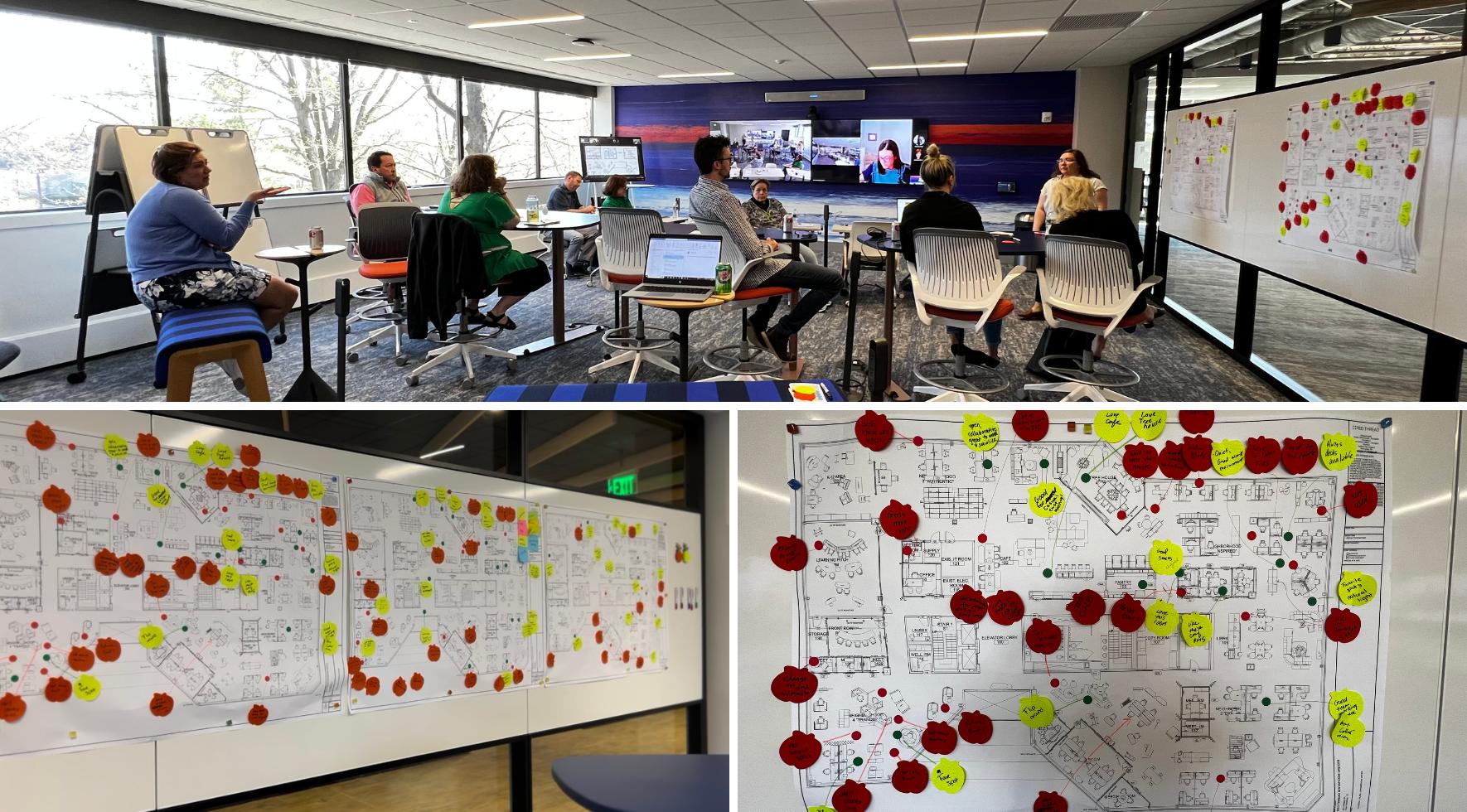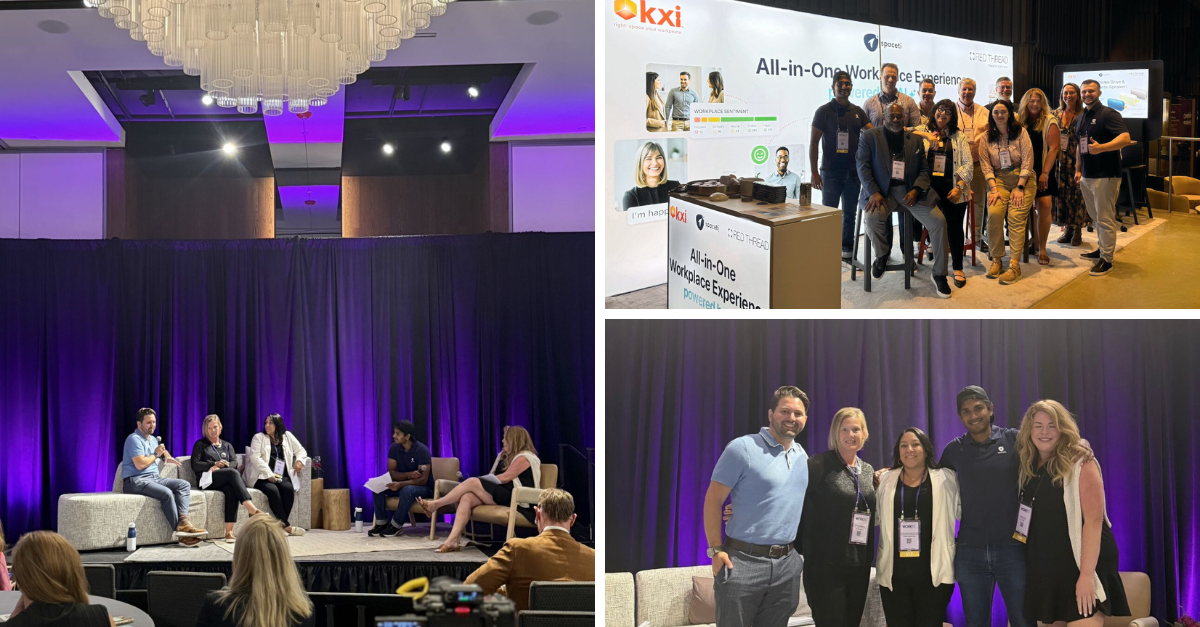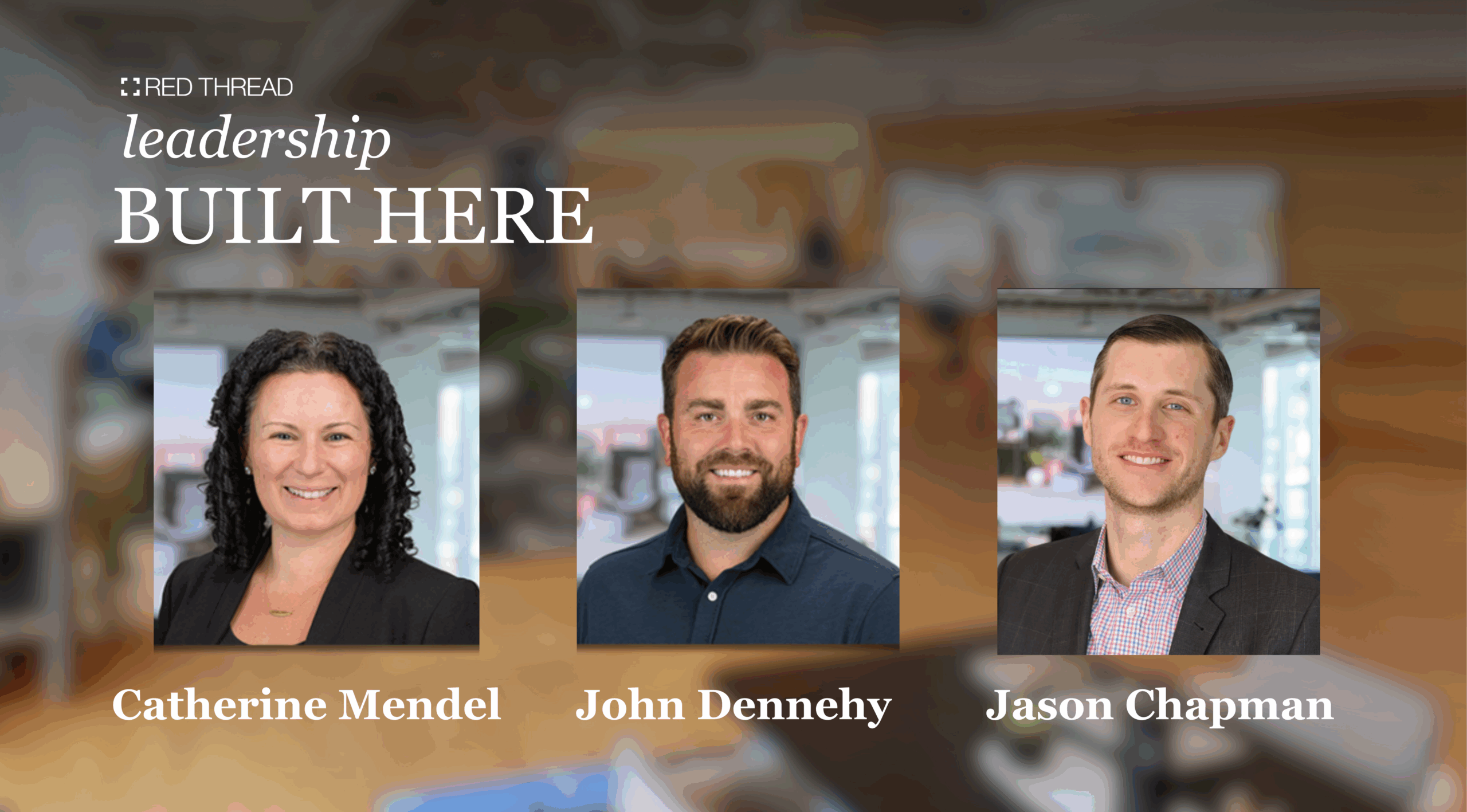Here’s how to bring community-based design to life through five workplace districts.
What makes a workplace truly work? For us, it starts with community.
What is community-based design?
Community-based design reimagines the office not as a one-size-fits-all floorplan, but as a dynamic ecosystem—more like a well-planned city than a sea of desks. Inspired by decades of Steelcase research and rooted in urban planning principles, this approach organizes space into five distinct districts. Each one is purposefully designed to support a range of experiences, from focus and collaboration to learning and rejuvenation.
Below, we’re breaking down each district with 5 real workplace project examples of community-based design.
1. City Center
The heart of the workplace—built for connection.
This is the hub. The heartbeat. It’s where people naturally gather, often without planning to. In our projects, City Centers have included welcoming cafés, open lounge zones, and centralized staircases with soft seating—spaces that bring people together and foster casual connection.
Example: A multi-functional café space with a variety of seating options, bar-height tables for impromptu chats, and digital signage that keeps teams informed and connected.

2. Neighborhoods
Your home base for daily flow.
Neighborhoods support both the individual and the team. These are familiar, comfortable zones designed for focus, regular check-ins, and day-to-day work. We often create neighborhoods with a mix of workstations, team lockers, and nearby enclaves for quick, private conversations.
Example: A team zone with height-adjustable benching, acoustic panels for noise control, and touchdown spaces nearby for one-on-ones or quick strategy huddles.
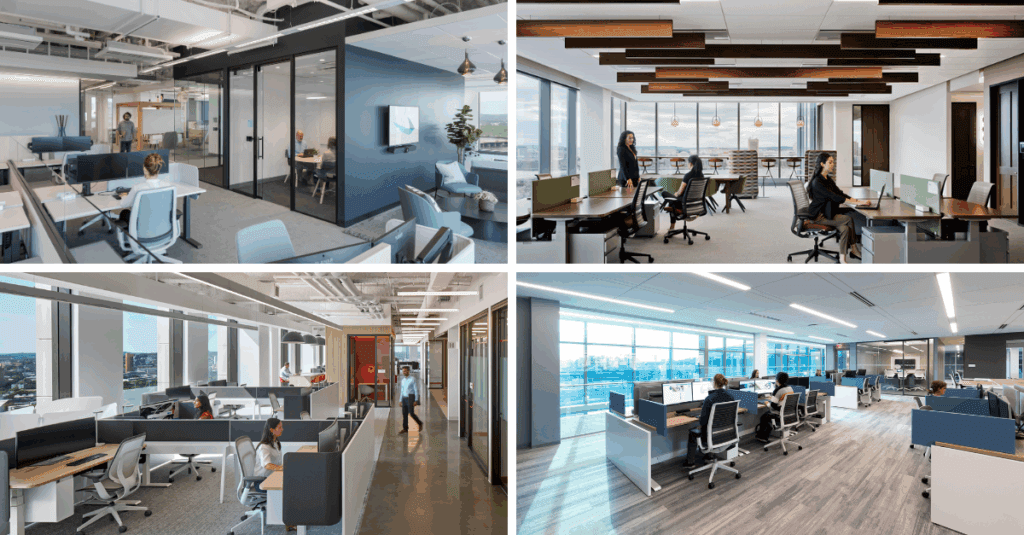
3. Business District
Where ideas scale and momentum builds.
Fast-moving and adaptable, the Business District includes open collaboration areas, enclosed meeting rooms, and everything in between. It’s where people connect to co-create and drive projects forward. We often integrate mobile whiteboards, plug-and-play tech, and writable surfaces.
Example: A variety of reservable and non-reservable rooms, project spaces with movable furniture, and open collaboration zones with layered lighting and technology for hybrid collaboration.
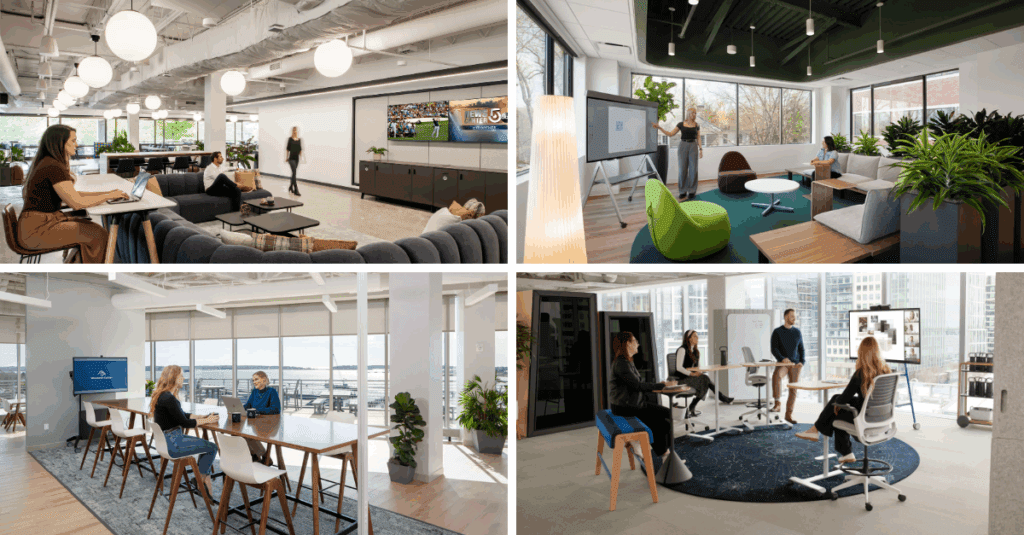
4. University District
Learning, mentoring, and idea exchange—every day.
This district blends formal training with casual upskilling. It’s about making learning part of the daily rhythm. We design these spaces to support peer learning, onboarding, and cross-functional development—think team libraries, learning lounges, and workshop zones.
Example: A large multi-use training room with mobile tables, a writable wall, and AV integration; paired with smaller breakout rooms for debriefs and mentoring conversations.

5. Urban Parks
Because wellbeing is part of the work.
We all need a moment to recharge. Urban Parks are dedicated spaces for mindfulness, movement, or just a mental reset. We’ve designed everything from quiet reflection areas with biophilic elements to wellness rooms and outdoor terraces.
Example: A quiet retreat zone with soft lighting, plush seating, acoustic materials, and views of the outdoors—offering a restorative break in the middle of the day.
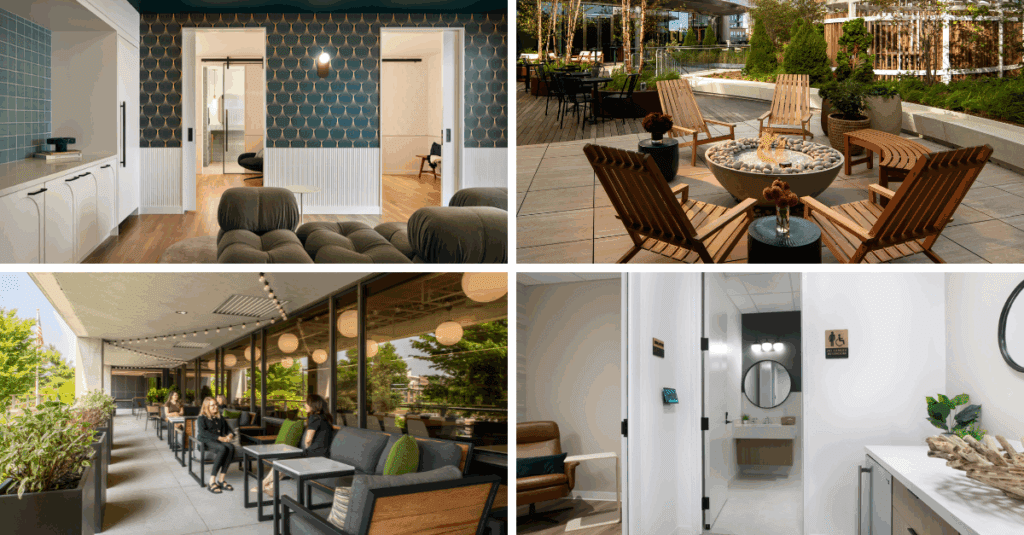
Community-based design helps organizations think differently about space, not just by what it looks like, but by how it works. The most successful workplaces today are more than beautiful—they’re intentional. By designing with the community in mind, we help groups create spaces that support different types of work and the people who do it.




